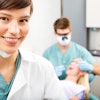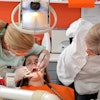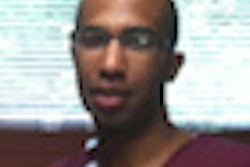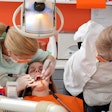
A Montana dentist has come up with a novel solution to a chronic shortage of experienced dental assistants: He started his own program, which touts hands-on training by dentists.
"There was a shortage of qualified assistants, and our offices have grown dramatically," explained E. Wade Wilde, DMD, who developed the training course for Brewer Dental in Billings and is co-owner of the practice. "We found over and over again that as we brought in assistants from local training programs, they had no actual hands-on work experience at all; they were underprepared by a long ways for what we needed in our office."
“As we brought in assistants from local training programs, they had no actual hands-on work experience.”
The practice now employs 112 staffers, including 15 dentists, an orthodontist, and 45 dental assistants who work in three offices, with plans for a fourth location.
So after discussing the idea for a couple of years, Dr. Wilde established a new dental assisting school, the Brewer Dental Education Center, where the first class of 15 students started in May. The eight-week course costs $5,595 but is not accredited.
Comparatively, a yearlong college dental assistant training program in Great Falls, MT, that is accredited costs $10,000, Dr. Wilde said. The average cost for tuition and fees in accredited dental assisting programs in 2010-2011 ranged from about $8,000 to $12,000 depending on students' residency, according to an ADA survey.
To become a certified dental assistant (CDA), applicants must take a special Dental Assisting National Board (DANB) exam. To qualify for the full three-component exam (radiation health and safety [RHS], infection control [ICE] and general chairside assisting [GC]), or just the GC component, they have two options: They can either graduate from a program accredited by the Commission on Dental Accreditation, which requires a minimum of 900 hours of instruction -- including at least 300 hours of clinical training -- in an educational institution. Or, if dental assistants have been trained on the job – as it is estimated that more than half of them have -- they must have completed at least 3,500 hours of work experience within two to four years in order to be eligible to take the full CDA exam or the GC component of the exam.
Meeting a need
In some states, anyone can start a dental assistant school because the profession doesn't have mandatory education requirements -- unlike those for dentists or hygienists -- and some states don't require a permit or license to operate a proprietary school, noted Cindy Durley, MEd, MBA, executive director of DANB.
"Some dentists have started dental assistant programs because they feel they have a good track record training assistants, and others are looking for alternate revenue sources," she noted. "DANB views CODA-accredited dental assisting education programs as the gold standard, and that's the primary pathway to take the CDA exam. But we recognize not everyone can take those programs, and that's why we have the on-the-job training pathway."
 Dr. E. Wade Wilde developed a dental assistant training course for Brewer Dental in Billings, MT.
Dr. E. Wade Wilde developed a dental assistant training course for Brewer Dental in Billings, MT.
Brewer pays new graduates of its dental assistant program $12 to $14 per hour, but they usually get increases quickly, according to Dr. Wilde, and some of his assistants make $27 per hour. The median pay for a DANB-certified dental assistant is $18.60 per hour; noncertified assistants make $17.06 per hour.
One of the advantages of the program, Dr. Wilde noted, is that graduates are guaranteed 30 hours of employment. About five of the graduates will be hired for extended contracts, he said.
Dental assistants are one of the fastest-growing occupations, and the profession is expected to grow 31% by 2020, according to the U.S. Bureau of Labor Statistics.
Durley attributes the projected rapid growth in dental assisting jobs, in part, to the growing number of states that have approved expanded function dental assistants.
"It definitely makes the occupation more attractive, there's more of a career ladder,” she told DrBicuspid.com. "Some of the functions that in the past were performed by dentists can now be done by qualified dental assistants, as determined by each state's board of dentistry. Dentists are looking for folks with broader skill sets because it frees them up to do more complicated procedures that only dentists are qualified to perform."
Hands-on training
Four of Brewer's dentists and six of the practice's experienced dental assistants teach in the dental assistant program.
"One of the things we found when we started quizzing assistants is that dentists are allowing them to take x-rays in their learning process, which is illegal because they aren't allowed to expose x-rays until they've passed the radiation certification test," Dr. Wilde said. "We were in that quandary also, so we purchased mannequins so they can take and expose radiographs and learn how to develop them without having to expose x-rays on humans."
Montana requires dental assistants to pass DANB's RHS component of the CDA exam, Durley said. DANB sets no eligibility requirements for the RHS component of the CDA exam since individual states have various (or no) course requirements to expose dental radiographs. Montana has no course requirements for this function, she noted.
Previously, Dr. Wilde said it took three to four months to train dental assistants to become comfortable and competent in their duties.
"By that time they're usually being heavily marketed and pursued by other dentists in the area who are anxious to have some qualified, trained employees also," he pointed out.
 Brewer Dental Education Center's first class of 15 students with four dental assistant instructors.
Brewer Dental Education Center's first class of 15 students with four dental assistant instructors.Dr. Wilde said there's been so much interest in their program that a second course has already sold out for the fall.
"There's definitely a shortage here," Dr. Wilde said. "We're not the only office seeking assistants, and the other doctors are having similar frustrations. We have nine requests so far from other offices."



















